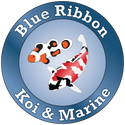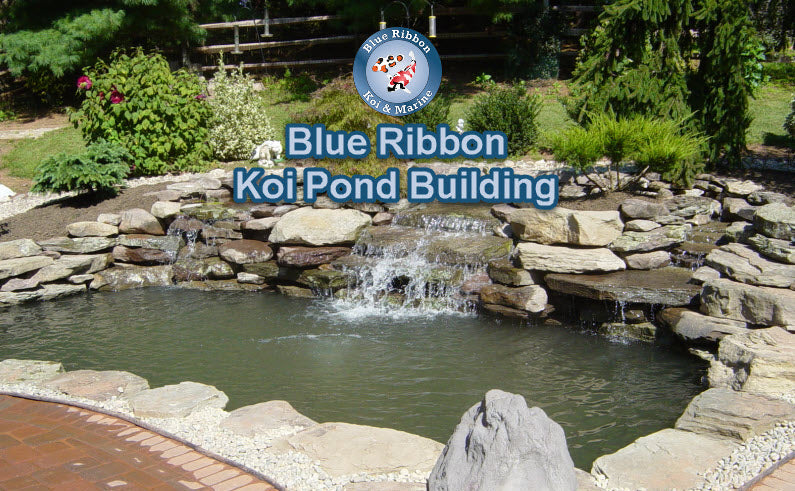
Creating a koi pond is an artful endeavor that requires careful planning, attention to detail, and a deep appreciation for the delicate balance of aquatic life, in this case the life of your Koi and Plants.
In this walkthrough, we will explore the fundamental elements of constructing a koi pond the RIGHT way, laying the groundwork first for a thriving and harmonious aquatic habitat.
Koi ponds have captivated enthusiasts for centuries, originating in Japan as mere rice paddies, later transformed into serene aquatic environments adorned with vibrant and graceful koi fish. Today, these ponds have become a symbol of elegance and serenity, gracing gardens, backyards, and public spaces around the world. However, the allure of these beautiful water features should not overshadow the responsibility that comes with building a koi pond.
Throughout this exploration, we will emphasize the significance of designing and constructing a koi pond with the well-being of the fish as the utmost priority. Unlike typical garden ponds, koi ponds demand thoughtful consideration for the fish's health, happiness, and longevity. From water quality to filtration systems, every element plays a crucial role in the success of a koi pond.
One of the most pivotal decisions any koi pond enthusiast must make is the type of filtration system to use. In this exploration, we will delve into the comparison of two primary filtration systems: the submersible and external inline pond filters. Each of these systems boasts unique advantages and drawbacks, and understanding their differences is vital in making an informed choice for the well-being of your koi.
Submersible filters, as the name suggests, reside beneath the water's surface, discreetly working to remove impurities and maintain water clarity. On the other hand, external inline filters stand proudly outside the pond, efficiently cleansing the water and offering easy access for maintenance. By understanding the mechanics, benefits, and limitations of each, you can confidently select the filtration system that best suits your pond's requirements.
Here is a list of comparisons:
|
|
Submersible |
External In-Line |
| Instillation | Easy/Drop in | PVC Plumbing |
| Initial Cost | Moderate | Higher |
| Appearance | Visible In Pond | Hidden in Landscape |
| Energy Consumption | Higher /GPH | Lower rpm, lower cost |
| Lifespan | 1-3 Years | 5-10 + Years |
| 110 Volt in water! | Yes | No! |
| Easy Cleaning | No | Yes |
| Space Needed | Pond Real Estate | Yard Real Estate |
| Noise | Quiet | Quiet |
Before we delve into the depths of submersible and external inline filters, it is essential to lay the foundation of a successful koi pond. From the proper location to size considerations, construction materials, and essential equipment, we will explore each step necessary to ensure your koi pond is a flourishing oasis for these mesmerizing fish.

Whether you're a passionate pond enthusiast or considering investing in professional assistance, we're here to help you get it right the first time. Building a pond can be a dream come true, but it's crucial to provide the right environment for your koi to thrive.
-
Gathering Information: Before you dive into building your pond, gather information from various sources to ensure success. Consider joining Koi Clubs, reading books and magazines, watching videos, seeking advice from experienced hobbyists, consulting professionals, and using the internet as a valuable resource.
-
Selecting the Pond Location: Choose a location for your pond that's close to your house or an area where you can enjoy it regularly. Outline the proposed shape, size, and location using a hose or rope and view it from different angles over several days. Take trees into consideration for providing shade, cooler water, and a natural appearance. However, be cautious of trees with dropping foliage that may pose challenges for maintenance.
-
Planning Considerations: Avoid planning your pond in a ground water path. Plan for soil relocation during excavation and consider the filtration location, pipe placement to and from the pump, electrical and water availability, and the presence of underground utilities, septic systems, or irrigation.
-
Budget Considerations: Establish a budget range for the entire project, including equipment, landscaping, utilities, labor, and livestock. Remember not to skimp on filtration to save money, as proper filtration is crucial for the health of your pond and koi.
-
Pond Depth and Dimensions: Aim for a minimum depth of 3 feet, but 6 feet or deeper is desirable, especially if you plan to keep larger koi. A 3-foot depth provides protection from predators and helps regulate temperature extremes. Make your pond as large as your budget and landscape allow, avoiding a width wider than 13 feet for ease of netting fish. Consider the filter capacity when determining the pond size.

-
Koi Pond Essentials: Ensure your pond includes essential elements like bottom drains, skimmers, vertical sides, and proper aeration. Bottom drains continuously feed waste to the filter, while skimmers remove floating debris before it sinks. Vertical sides discourage predators and facilitate debris movement towards the bottom drains.



-
Filtration: Choose the right filtration system for your pond based on your pond volume. Consider a pressurized system for its flexibility in location and ease of maintenance.

-
Ultraviolet Sterilization: Install an ultraviolet sterilizer to eliminate green water caused by free-floating algae spores, kill parasites, and bacteria. Ensure proper flow rate for effective clarification.
AQUA VIOLET ULTIMA II
-

-
Designing your Filtration System: Plan the location and sizing of your pump, filter, and ultraviolet sterilizer. Use flexible PVC for ease of installation.

-
Digging: When digging, use virgin soil, especially for waterfalls, and compact it tightly. A backhoe can be a helpful tool for this step.


-
Constructing the Pond: Dig trenches for bottom drain and skimmer pipes, slope the bottom towards the drains, and install concrete for stability if needed. Create a shelf for rock placement around the pond's edge in shallow water.
-
Liner Installation: Protect the pond with liner protection fabric and install the liner carefully, minimizing folds and wrinkles.







-
Rock Placement and Waterfalls: Plan the waterfalls and edges using large rocks. Seal the cracks with expanding foam or concrete and soften the rock appearance with plants.







-
Completing the Filtration System: Finish plumbing the filtration system for optimal efficiency.

-
Preparing Water for Fish: Start up the filtration system, dechlorinate the water, remove heavy metals, and add beneficial bacteria. Test the water for chlorine and consider aerating well water before adding fish.

-
Introducing Fish: Add a few test fish first and test the water regularly. Gradually add more fish over 4-6 weeks, allowing the pond's bioactivity to establish safely.
Building your first pond can be an exciting and rewarding experience. Following these steps will ensure that your pond provides the ideal environment for your koi and enhances the beauty of your landscape.
If you have any questions or would prefer to have our team step in to help you build your pond reach our to our team. john@blueribbonkoi.com or complete the form at the bottom of our homepage.

